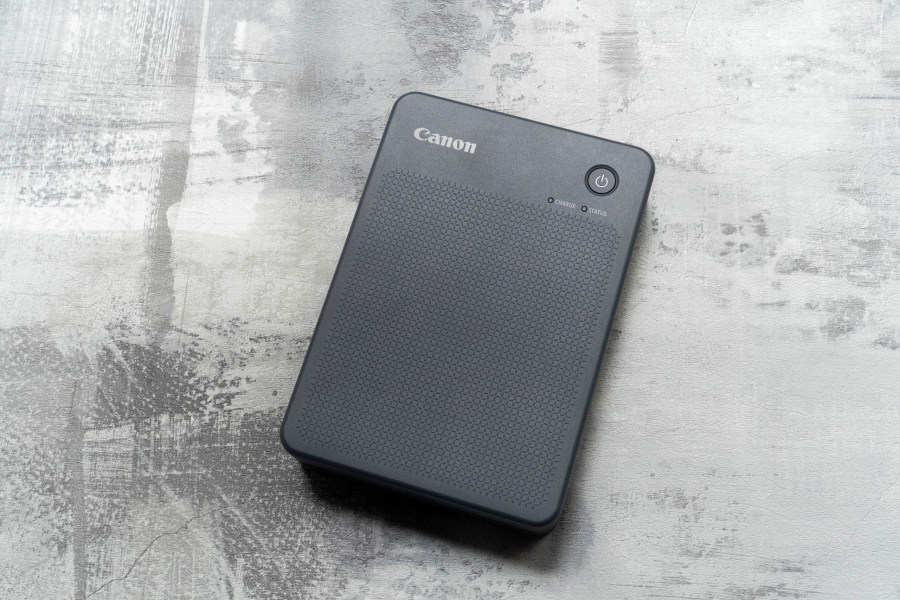Amateur Photographer verdict
With excellent print quality and an easy-to-use app, the Selphy QX20 is great at what it does. But, the price is quite high, with the ongoing cost of paper/ink for it which needs to be considered- Great print quality
- Easy to use app
- Prints both square and ‘card’ sizes
- Borderless printing
- Expensive ink/paper sets
- High initial price
- Switching between the formats is quite a faff
Small, portable printers can be great fun for a variety of reasons. You might want to hand out a small print to a street photography subject, place a printer like this on a table at a party or event, or have the ability to quickly print out small snaps for scrapbooking and so on.
The Canon Selphy QX20 is an upgrade from the QX10 printer. Where previously you could only print square format (1:1) prints, a new “card-sized” (3:2) format has been introduced, giving you the flexibility to choose between the two. It’s also now possible to print borderless around three of the edges of the print too.
At a glance
- Print size: XS-20L (square): 72 x 85mm, XC-20L/XC-60L: 54 x 85mm
- Ink cartridge: Included with paper
- Printing speed: 40 seconds (approx.)
- Connectivity: Wi-Fi, USB
- Power supply: USB-C
- App: Selphy Photo Layout
- Price: £125
Unlike other portable printers, the Selphy QX20 uses “ink casettes” and dye sublimation technology, which transfers dye to the paper via three passes of cyan, yellow and magenta, followed by a final overcoat.

This compares with other instant printers, which don’t use ink cartridges at all. This includes those that use “ZINK” paper, where crystals are heat activated on the paper itself to produce the colours, and the very popular Instax range, which uses traditional dye developing.
The upside of the dye-sublimation process is that you get much better quality prints, but it means you need the ink cartridge for it to work, rather than just the paper. Additionally, Canon says that the prints should last for up to 100 years. Canon has used an accelerating testing method to confirm this, but note that this applies to prints which have been stored in an album – you shouldn’t necessarily expect similar results if you were to store the pictures in direct sunlight for example.
Build and Handling
Setting up the QX20 is very simple.
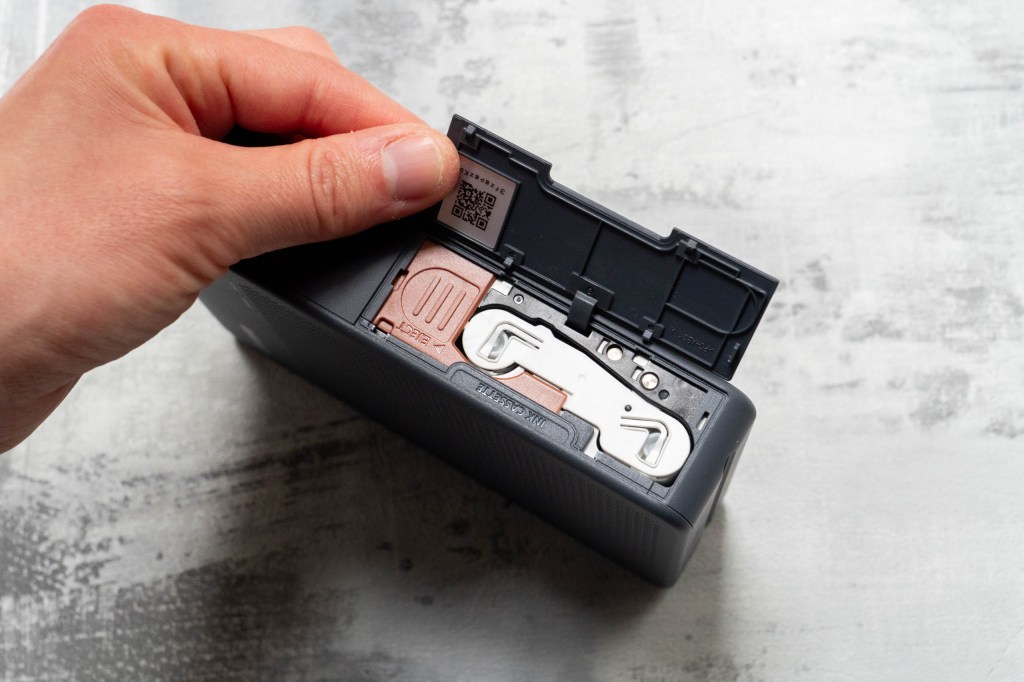
First you’ll need to insert the ink cassette in the side of the printer, which is found behind a small door. It’s pretty obvious how to do this, as there’s only one way in which the cassette will fit. You simply slide it into place until you hear a click, then close the door.
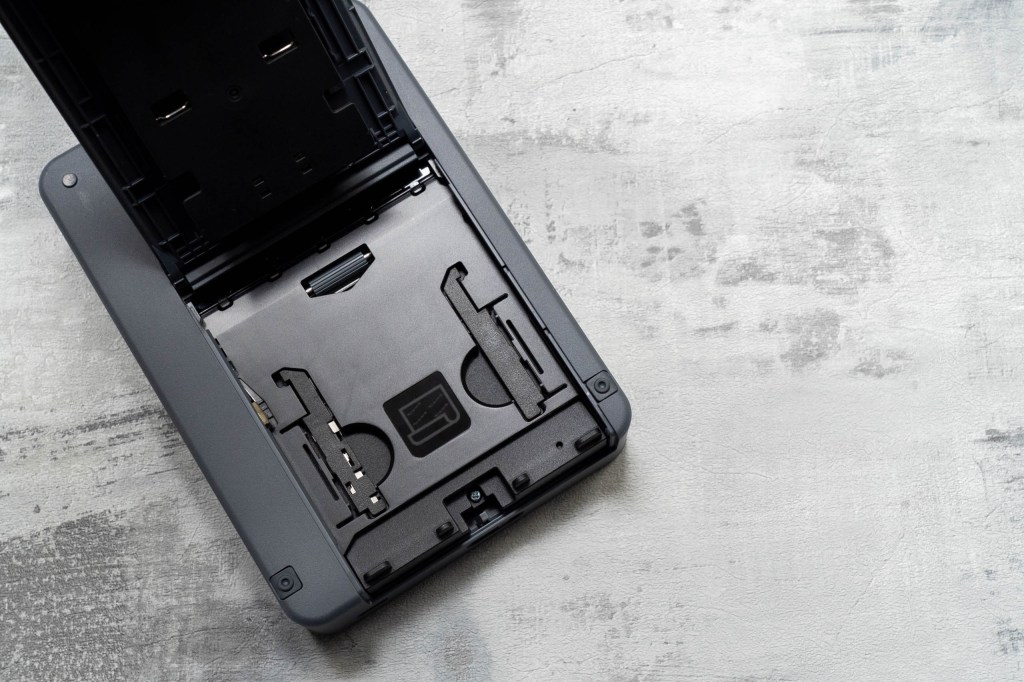
Next is loading the paper. A lever opens the door where the paper is loaded. If you’re using the XC (card sized) stock, then you’ll first need to raise the paper guides, but you leave them down if you’re using XS (square) stock. Close the door and you’re ready to go. Note that although packs of paper can be bought in quantities of 20 or 60, you can only load 10 sheets at any given time.

When you first use the Selphy QX20, you’ll need to pair it with your smartphone after downloading the Selphy Photo Layout app. This is very simple, you simply scan the QR code behind the print cassette door and the connectivity is all taken care of – it should simply work when you come to print something. I’ve been using it with an iPhone 16 Pro and have had no problems with connectivity.
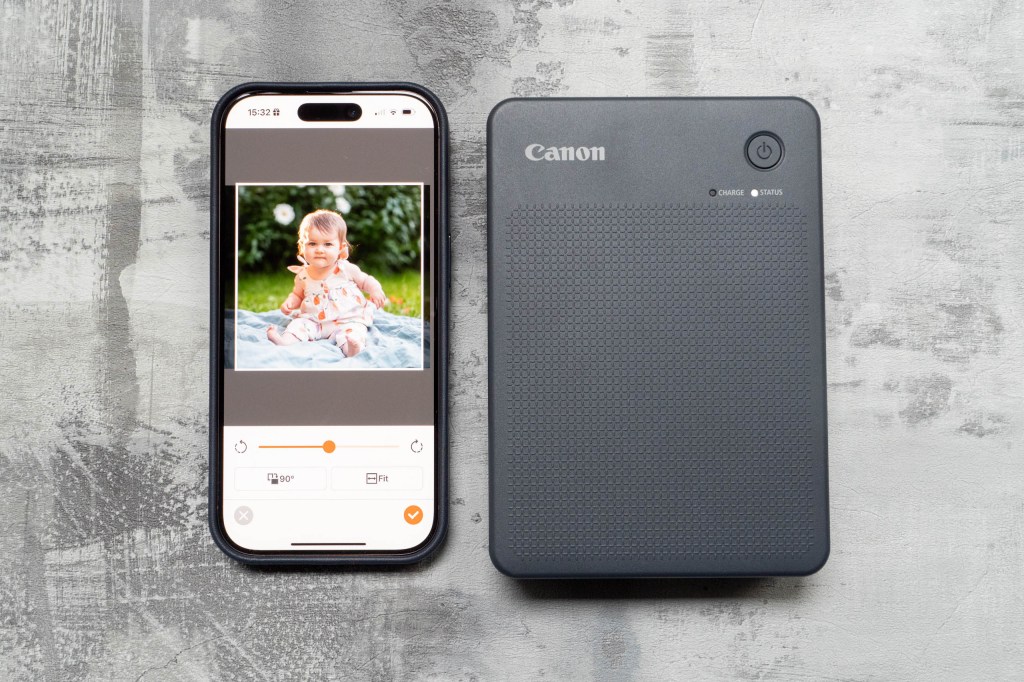
The app itself gives you lots of different options. You can print borderless, or with narrow, normal, wide or rounded borders depending on the look you’re going for. With the square format, you can print in either up, down, right or left position, but with the card format, you can only print in one position. You can also adjust the position of the photo within the frame, as well as rotating, cropping, adjusting colour (brightness, contrast, saturation) and add a filter.
It’s also possible to create collages, and add some “stamps”, text, doodles and overcoats on to the images too. It’s worth having a look at these and seeing if you like them.
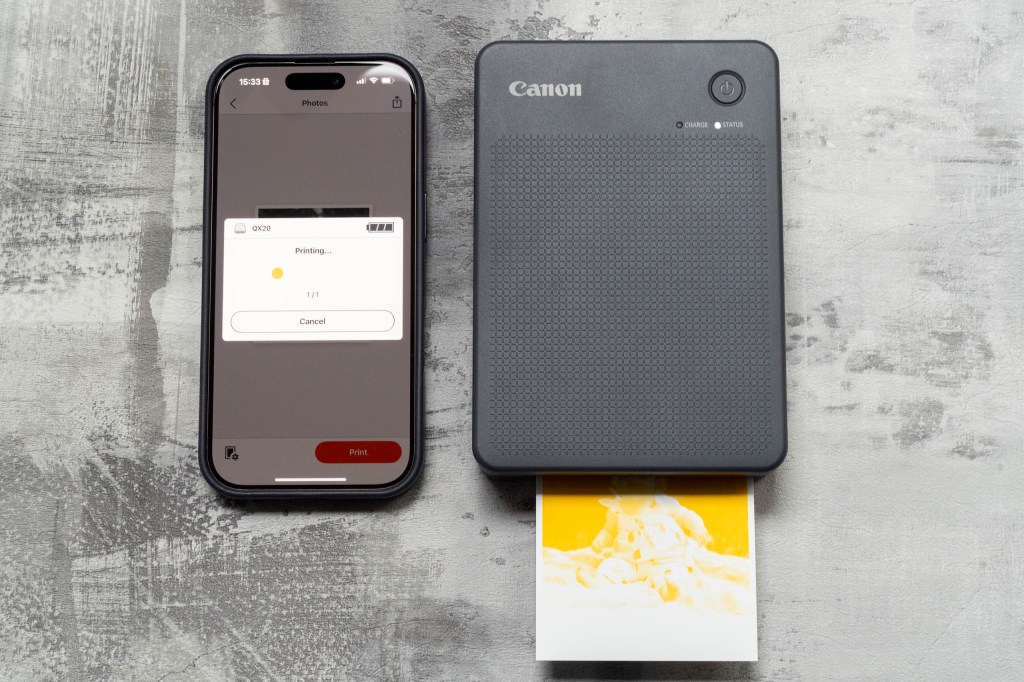
Once you’re ready to print, you simply tap print, and the app should connect to the printer and start the process. At 40 seconds, this is slightly faster than the QX10, and it’s quite the spectacle to see the print being ejected and retracted four times – one each for the cyan, yellow, magenta and overcoat, before being ready to take out. It’s important you don’t try and remove it before the app tells you.
Upon removing the print, it’s finished – again, marking a difference between other types of instant printers where you need to wait for the print to develop, which can take significantly longer.

It’s worth noting at this point that although the printer is capable of printing in two different formats, switching between the two isn’t the most straightforward. You will need to ensure that you remove the corresponding ink cassette and insert the one that came with the paper format you’re trying to use. Otherwise, you’ll get an error message telling you that the ink cassette is the wrong format.
Print Quality
It’s safe to say that prints from the QX20 are excellent.
Colours are nicely represented, with lovely fine details and the paper itself has an attractive sheen to it. It’s of similar quality to traditional inkjet printing and would be a great keepsake / album print.
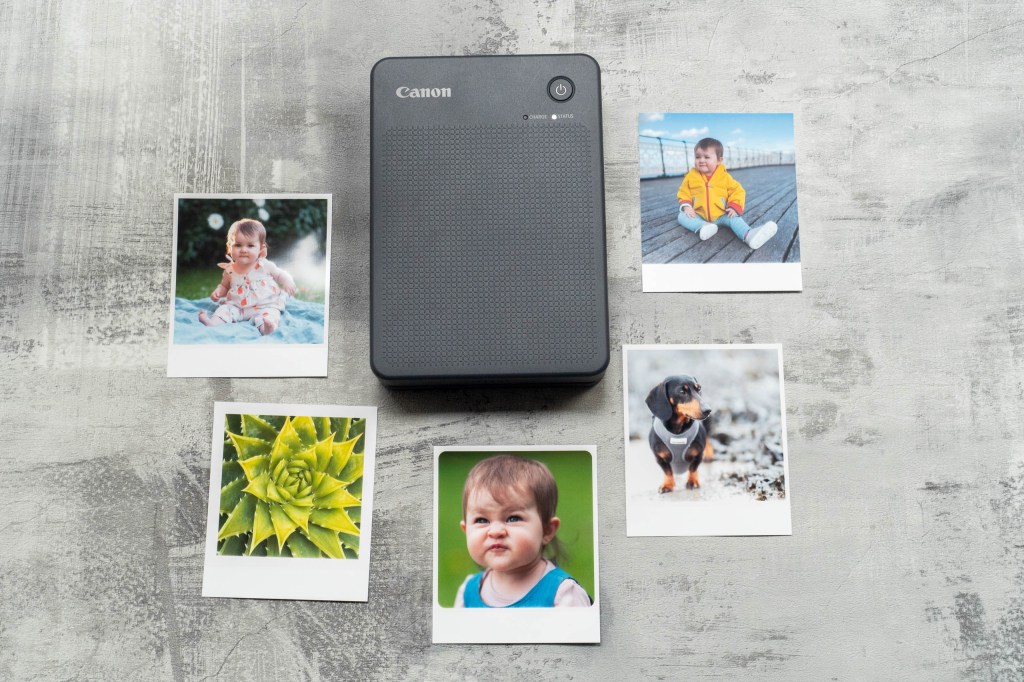
It’s very true to say that image quality, in a technical sense, surpasses that from other types of instant printer, particularly ZINK which while impressive in the way that it works never produces particularly good prints.
Some may argue however that the print quality is too good. That might seem like a strange comment, but I think some of the charm of the Instax range is that it’s not perfect, where this arguably feels a little clinical. But that’s subjective and very much depends on what your preferred style is.
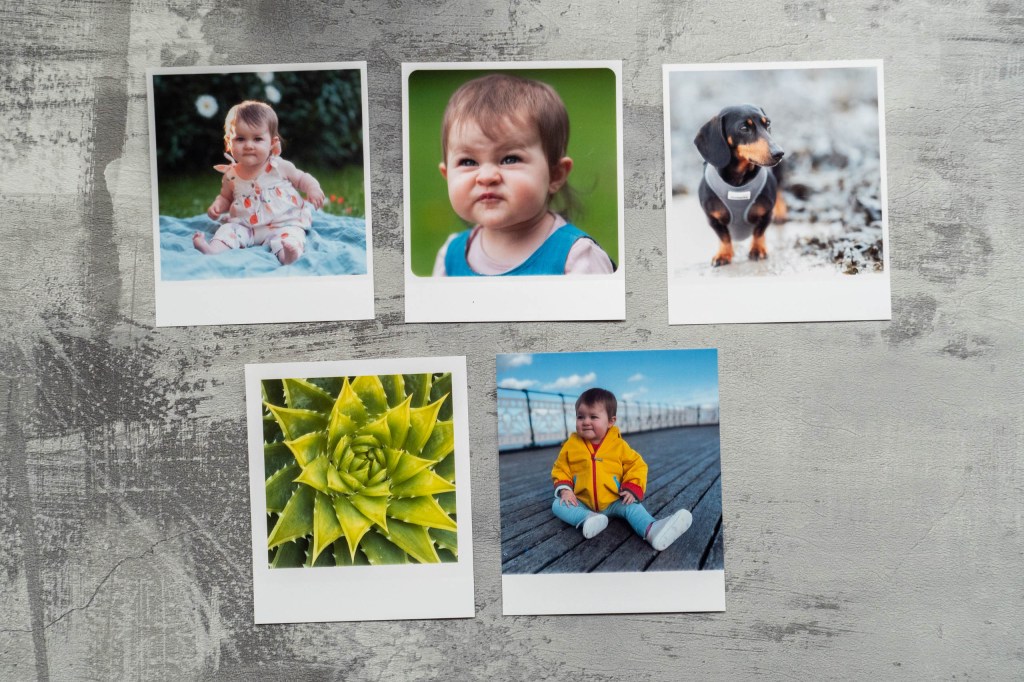
Which border style you prefer is again subjective. By printing with the borderless option, you will be left with a border at the bottom of the print – you can either use this as a space to write a caption, or you can simply chop it off and it will be truly borderless. I like the “narrow” border the best, but the “Normal” and “Wide” give a nice traditional look, too.
Value for Money
The QX20 will set you back £124.99, which is quite a high price to pay for a small printer. However, it compares well with the Instax Mini Link 3, which is £114.99 (RRP) or the Instax Square Link, which is £129. Bearing in mind, that with the Instax printers, you can’t move between formats at all, being able to print in either for £124.99 could be considered good value for money if you like the idea of portable printing.
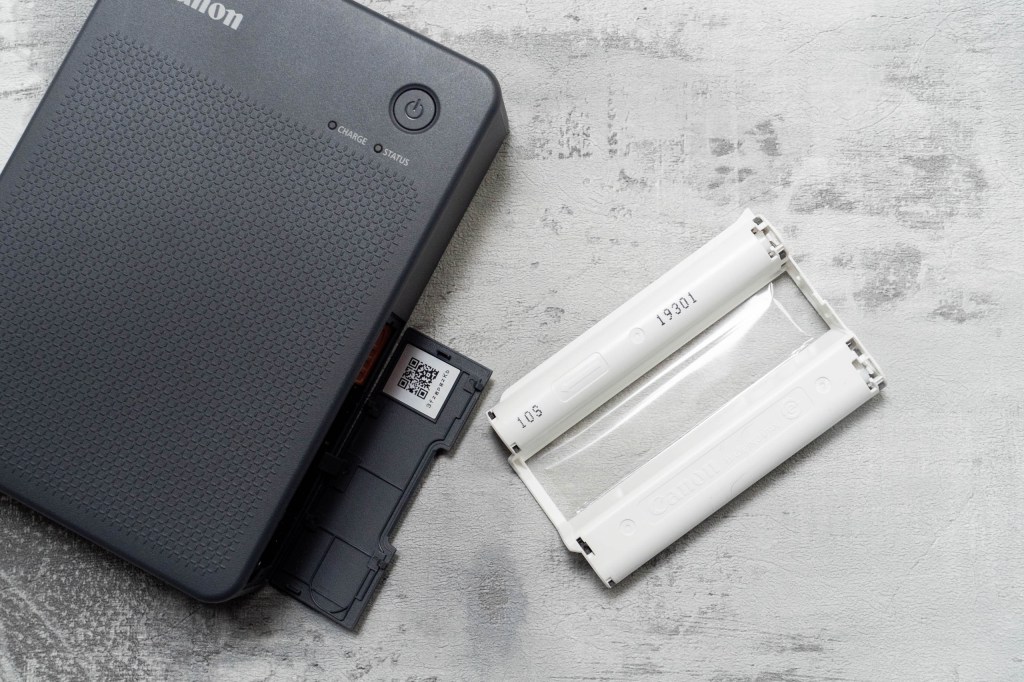
Next though you’ll need to consider the ongoing cost of purchasing ink cassettes / paper. A 20 pack of the XS-20L (square) paper is £16.99, while the XC-20L (card) paper is £19.99 for 20. That gives you a per print price of 84p / 99p. That’s quite a lot compared to a home inkjet printer, or sending your prints off to a printing service. Of course, you don’t get the fun or convenience of the portable format, though.
The per print price comes out as slightly more expensive than the comparable Instax sizes. A 20 pack of Instax Mini costs £14.99, or £16.99 for Instax Square, leaving you with a per print price of 74p/84p.
Verdict
There’s a lot to like about the Canon Selphy QX20.
It does what it does very well, and on the whole it’s pretty simple to use. It’s a little bit of a faff to switch between the different print formats, as you need to change both the cartridge and the paper, but having that choice is quite handy.
You need to be fairly selective with what you print out, as the costs can quickly mount up, but for something like a special occasion – or perhaps for specialist uses, such as street and fashion photographers – then it’s a great piece of kit to have around.
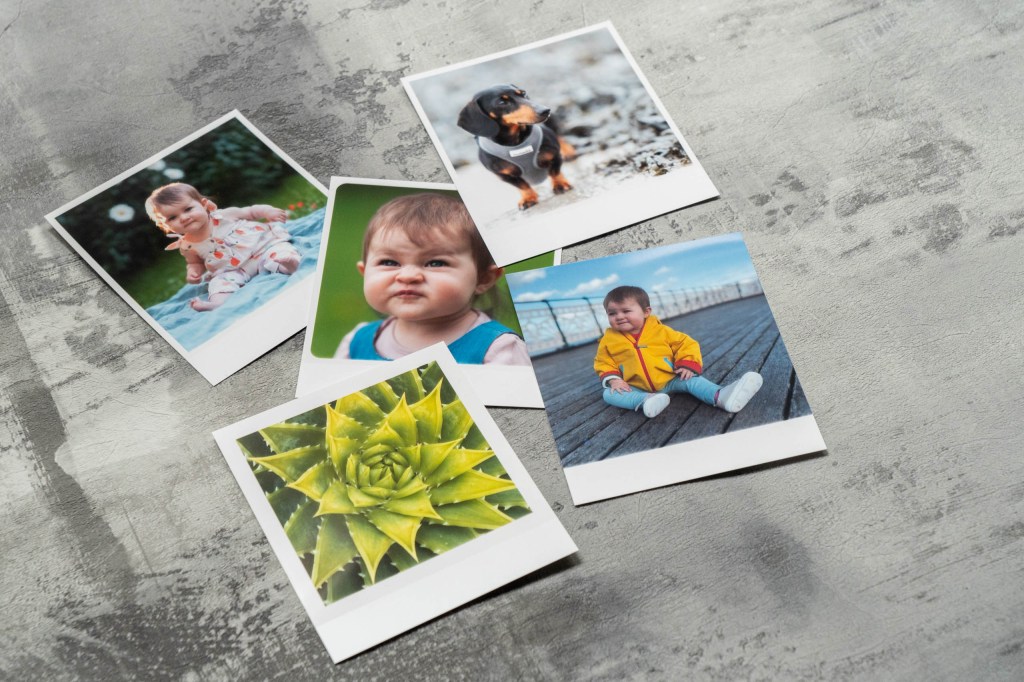
The improvements from the QX10 are welcome, making it overall a more flexible proposition.
There will be plenty who prefer the look and feel of Instax prints, with the Selphy prints perhaps being a little on the “clinical” side. But, that’s largely a subjective opinion and really depends on your own tastes.
If you want the highest print quality, as well as the most flexibility to choose between formats, then the Selphy QX20 comes recommended.

Related content:

